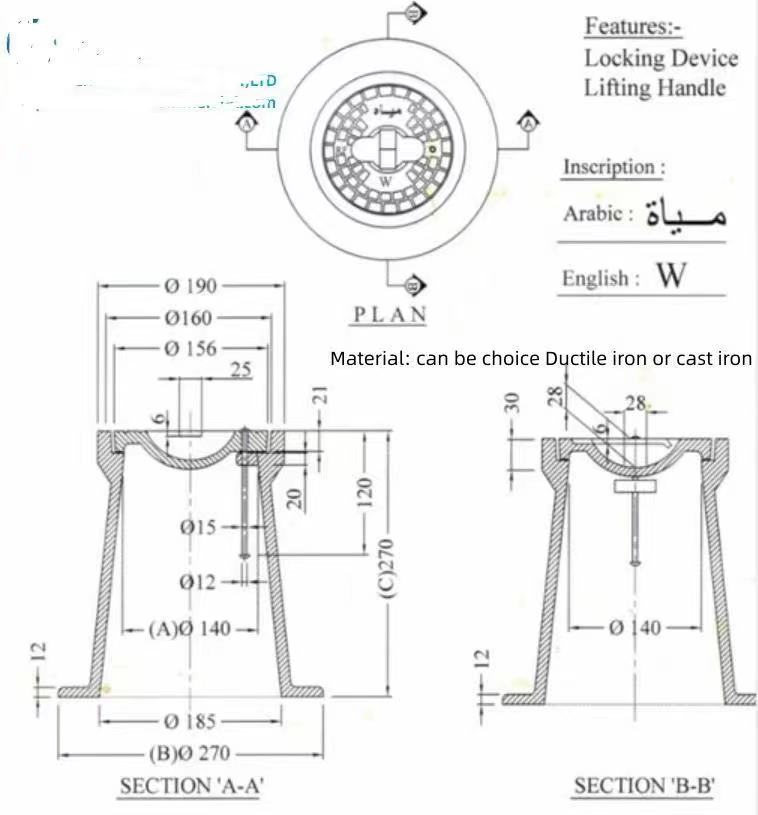Effective Design and Placement of Interior Bollards for Enhanced Safety and Aesthetic Appeal in Spaces
The Importance of Interior Bollards in Modern Design
In contemporary architecture and interior design, the role of functional elements is increasingly recognized as pivotal to the overall safety and aesthetics of a space. One such element that has gained traction is the interior bollard. These sturdy, vertical posts are not only practical but also enhance the visual appeal of an interior environment. As urban spaces become more densely populated and complex, the importance of interior bollards continues to grow.
Definition and Purpose
Interior bollards are short, robust posts or barriers often made from materials such as metal, plastic, or concrete. They are strategically placed within buildings, malls, parking garages, and other public or commercial spaces to serve various purposes. Primarily, these pieces of architecture are designed to protect pedestrians and vulnerable structures from vehicles, ensuring a safer environment. They can delineate walkways, direct foot traffic, and provide a clear boundary between different areas within a facility.
Safety and Protection
One of the most critical functions of interior bollards is safety. In high-traffic areas, where there is a mix of pedestrians and vehicles, the risk of accidents increases significantly. Bollards act as a physical barrier that helps prevent vehicles from straying into pedestrian zones, thus reducing the likelihood of collisions. For instance, in parking garages, bollards can outline pedestrian walkways and prevent vehicles from entering restricted areas. Their presence is a simple yet effective solution to enhance safety in dynamic environments.
Aesthetic Appeal
While the primary function of bollards is safety, they also play a significant role in the aesthetic design of a space. Interior bollards come in various designs, finishes, and colors, allowing them to complement the surrounding architecture instead of detracting from it. Designers have begun to leverage bollards as an artistic element, integrating them into the overall theme of a space. For example, sleek stainless-steel bollards might impart a modern feel in a tech-focused office environment, while rustic wood or stone bollards can enhance the natural aesthetics of a wellness center.
interior bollards

Versatility of Design
The versatility of interior bollards extends beyond aesthetics; they can be customized to fit different functions and styles. For example, retractable bollards can be deployed to create flexible space configurations, allowing for dynamic adjustments based on varying needs. In settings where events or gatherings take place, retractable bollards can quickly transform the space by opening up pathways or forming barriers as required.
Moreover, bollards can also serve secondary functions; they can be equipped with lighting to provide illumination for safety at night, or they can feature signage capabilities to guide users within a facility. This multifunctionality makes interior bollards an efficient solution for modern interior spaces.
Sustainability and Environment
In today’s world, the importance of sustainability in design is paramount. Interior bollards can also align with eco-friendly principles by being made from renewable materials or by incorporating recycled content. Architects and designers are increasingly considering the lifecycle of all materials used in building design, including bollards, aiming to minimize environmental impact while maintaining safety and functionality.
Conclusion
The significance of interior bollards transcends their physical presence; they embody a fusion of safety, functionality, and aesthetics. As urban spaces continue to evolve and present new challenges, interior bollards will remain an indispensable element in ensuring the balance between design and safety. Whether they are serving as protective barriers, guiding pedestrian flow, or adding visual interest to a space, the role of interior bollards in modern design is both essential and transformative.
-
The Smarter Choice for Pedestrian AreasNewsJun.30,2025
-
The Gold Standard in Round Drain CoversNewsJun.30,2025
-
The Gold Standard in Manhole Cover SystemsNewsJun.30,2025
-
Superior Drainage Solutions with Premium Gully GratesNewsJun.30,2025
-
Superior Drainage Solutions for Global InfrastructureNewsJun.30,2025
-
Square Manhole Solutions for Modern InfrastructureNewsJun.30,2025
-
Premium Manhole Covers for Modern InfrastructureNewsJun.30,2025
